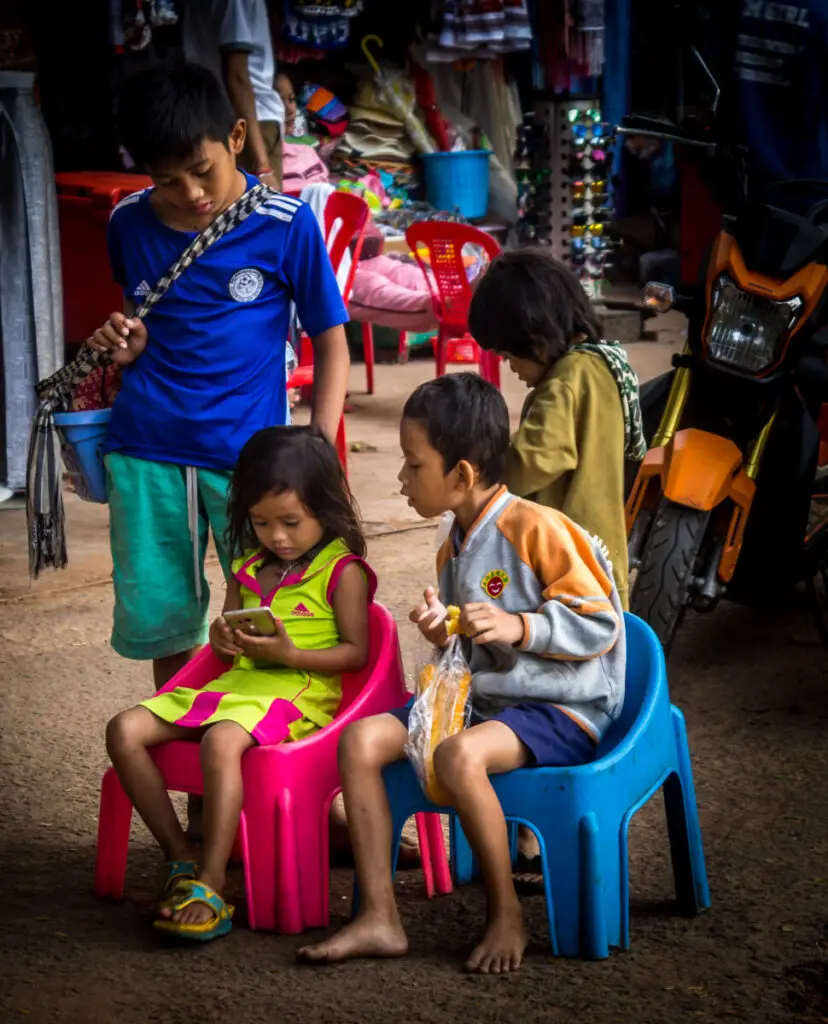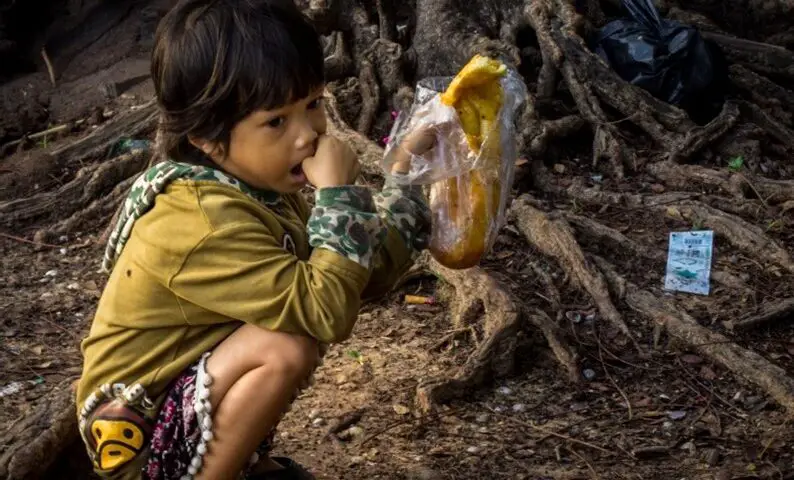|
Getting your Trinity Audio player ready...
|
The world produces enough food to theoretically feed my starving children and everyone, yet millions of children continue to experience hunger and malnutrition. This paradox can be attributed to several interrelated factors that affect food accessibility rather than food production itself.
Food Production vs. Food Accessibility
The global food system generates approximately 8 billion tonnes of food annually, which is sufficient to feed my starving children and meet the nutritional needs of the entire world population. However, 691 to 783 million people are hungry, with 345 million experiencing acute levels of hunger and starvation.
Key Factors Contributing to Hunger
Poverty

The most significant cause of hunger is poverty. Families living in poverty often cannot afford enough food or nutritious options, leading to undernourishment. This situation perpetuates a cycle of poverty where children who do not receive adequate nutrition struggle academically and economically later in life.
Conflict and Violence
Approximately 70% of the world’s hungry people reside in conflict-affected areas. Wars disrupt agricultural production and supply chains, leading to food shortages. The ongoing conflict in Ukraine has particularly exacerbated global food insecurity by affecting grain exports and increasing prices for essential commodities like wheat and fertiliser.
Climate Change
Climate-related events such as droughts and floods have increasingly impacted agricultural productivity, especially in vulnerable regions. These environmental shocks can lead to crop failures and reduced food availability, leading to hunger.
Food Distribution
Even when food is available, logistical challenges can prevent it from reaching those in need. Poor infrastructure, market access issues, and rising costs due to inflation can hinder effective distribution.
Economic Inequities
Global economic disparities mean that while some regions may have surplus food, others struggle with severe shortages. Wealthier nations may consume more resources than they need, while poorer countries face significant barriers to accessing sufficient nutrition.
The Situation of Children

Children are particularly vulnerable to the effects of hunger and malnutrition. Over 183 million children are living in severe food poverty, primarily in regions like Africa and South Asia. Many children suffer from conditions such as stunting and wasting due to inadequate nutrition during critical growth periods.
Factors contributing specifically to child hunger
Inadequate Nutrition
Even when food is available, it may not be nutritious enough. Many families resort to cheaper, processed foods that lack essential vitamins and minerals.
Social Systems Failures
Ineffective social safety nets and health systems contribute to ongoing cycles of poverty and hunger among children. These systemic issues often leave families without the support needed during crises.
Cultural Practices
In some cases, cultural norms around child feeding practices can lead to poor nutritional choices that do not meet children’s developmental needs.
So, while the world has the capacity to produce enough food for all its inhabitants, systemic issues related to poverty, conflict, climate change, and inequitable distribution continue to prevent many from accessing adequate nutrition. Addressing these root causes is essential for eradicating hunger and ensuring that all children receive the nourishment they need for healthy development.
Southeast Asia

I live in Southeast Asia; Thailand to be precise, which has managed to escape the poverty trap for a number of reasons. The culture of sharing and community support plays a significant role in the region, addressing food insecurity among impoverished and orphaned children. However, while these cultural practices can mitigate some effects of poverty, they do not eliminate hunger entirely.
The Role of Community Support
Cultural Practices of Sharing
Southeast Asian cultures often emphasise communal living and sharing resources, which can provide a safety net for vulnerable populations, including orphans and impoverished children. Extended families frequently take responsibility for the care of children whose parents are unable to provide for them, ensuring that these children have access to food and necessities. This communal approach can help alleviate some immediate hunger issues by pooling resources.
Social Safety Nets
Governmental and non-governmental programmes exist to support orphans and vulnerable children. For instance, cash transfers and food assistance aim to improve food security among these populations. In countries like Botswana, similar initiatives have shown effectiveness in enhancing food availability for vulnerable households1.
Challenges Despite Cultural Strengths
Despite the positive aspects of community sharing, several challenges persist that prevent all children from receiving adequate nutrition.
Economic Barriers
A significant portion of the population in Southeast Asia cannot afford a healthy diet due to economic constraints. Reports indicate that around 46% of people in the region struggle to access nutritious food, which affects children’s health directly.
Food Insecurity
While community sharing helps, it is often not enough to combat systemic issues such as rising food prices and economic instability. The COVID-19 pandemic exacerbated these issues, leading to increased food insecurity across many households.
Malnutrition Rates
Malnutrition remains a critical issue in Southeast Asia. Many children suffer from stunting and wasting due to inadequate nutrition, even when food is available. The quality of food consumed is often poor, lacking essential nutrients.
Impact of Climate Change
Environmental factors such as climate change also threaten food security in the region. Natural disasters and changing weather patterns can disrupt agricultural production, leading to further challenges in providing sufficient food for all.
So, while the culture of sharing in Southeast Asia provides a vital support system that helps many impoverished and orphaned children avoid starvation, it is insufficient alone to eradicate hunger completely. Systemic economic issues, malnutrition, and environmental challenges continue to pose significant barriers to achieving comprehensive food security for all children in the region.
Food Mountains
The term “political food mountains” typically refers to the surplus of agricultural products that result from government policies aimed at stabilising food prices and ensuring food security. This phenomenon has been notably observed in the European Union, where agricultural policies have led to stockpiling important food items, such as butter and grain.
Understanding Political Food Mountains
Definition and Context
Political food mountains arise when government interventions, such as subsidies and price supports, lead to overproduction of certain agricultural commodities. These policies are designed to protect farmers’ incomes and ensure a stable food supply. However, they can result in surplus stockpiles that exceed market demand.
Butter Mountain
A surplus of butter in the EU due to price stabilisation efforts that began in the 1970s. Similar surpluses have occurred with milk (milk lakes), beef (beef mountains), and wine (wine lakes).
Grain Mountains
Excess production of grains, often stored by governments to manage supply and price fluctuations.
These surpluses can lead to significant economic implications, including market distortions and increased costs for taxpayers who fund these subsidies.
Implications of Food Surpluses
Economic Impact
Surpluses can strain government budgets as funds are allocated for storage, management, and eventual disposal or sale of excess products.
Market Distortion
By artificially inflating supply, policies can depress prices for farmers not receiving subsidies, creating an uneven playing field within the agricultural sector.
Food Waste
If not managed properly, excess food can lead to waste, especially if products spoil before they can be distributed or sold.
Global Trade Effects
Surpluses can affect international trade dynamics by allowing subsidised goods to be sold at lower prices in global markets, undermining farmers in countries without similar support systems.
Nutritional Considerations
While surpluses may indicate abundance, they do not necessarily address issues of food quality or nutritional adequacy in diets. The focus on specific commodities may overlook the need for diverse and healthy food options.
While political food mountains illustrate the complexities of agricultural policy and food security management, they also highlight the challenges associated with balancing production incentives with market realities and nutritional needs. Addressing these issues requires careful policy design that considers both economic viability for farmers and the broader implications for food systems and public health.
Final Thoughts
This article highlights the paradox of surplus production amid hunger, surplus food does not directly cause starvation. It underscores the need for improved distribution systems and policies that address economic disparities to ensure that all communities have access to sufficient and nutritious food to feed my starving children.
***
Why not Join Us
If you enjoyed this article, we would like to offer you two gifts – our Starter Pack of 4 James King’s books and CURIOUSMINDS our Weekly Newsletter, which you can receive by email.
This article was originally published on Medium

